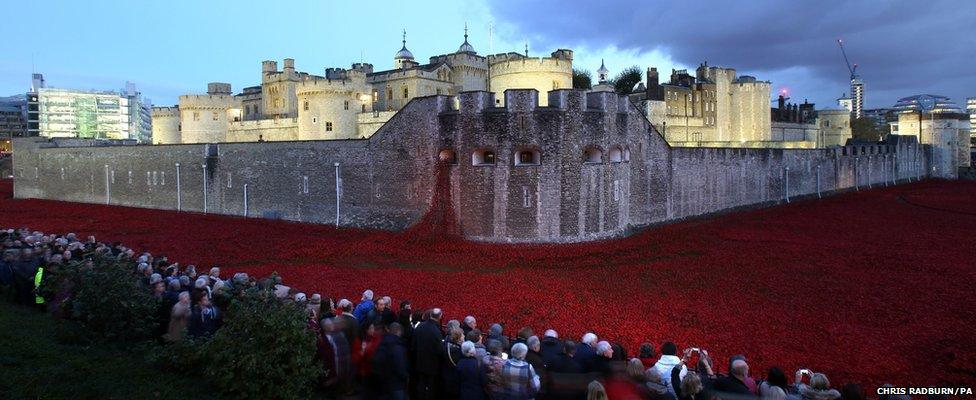In pictures: The poppies at the Tower of London
- Published

Nearly four million people are expected to have visited an installation at the Tower of London to mark the centenary of the start of World War One by 12 November.
Blood Swept Lands And Seas Of Red by ceramic artist Paul Cummins has proven so popular there have been calls for it to be extended.
London Mayor Boris Johnson is among those to have suggested the dismantling of the installation, due to start the day after Armistice Day, could be postponed. Thousands of people have also signed an e-petition calling for the poppies to remain.
To allow as many people as possible to see the installation, the hours that the site will be illuminated will be extended. From Friday, the poppies will be lit from 04:30 GMT until dawn and then from dusk until midnight.
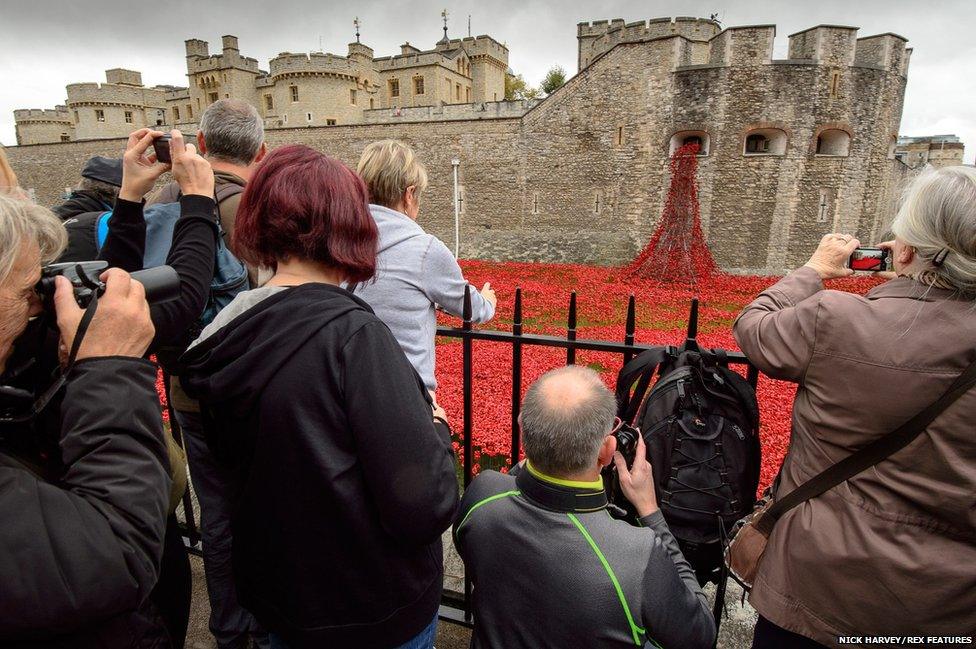
The first ceramic poppy was planted in July and the final one will be added on 11 November. By then, 888,246 poppies will fill the moat, each one representing a British or colonial death during the conflict.
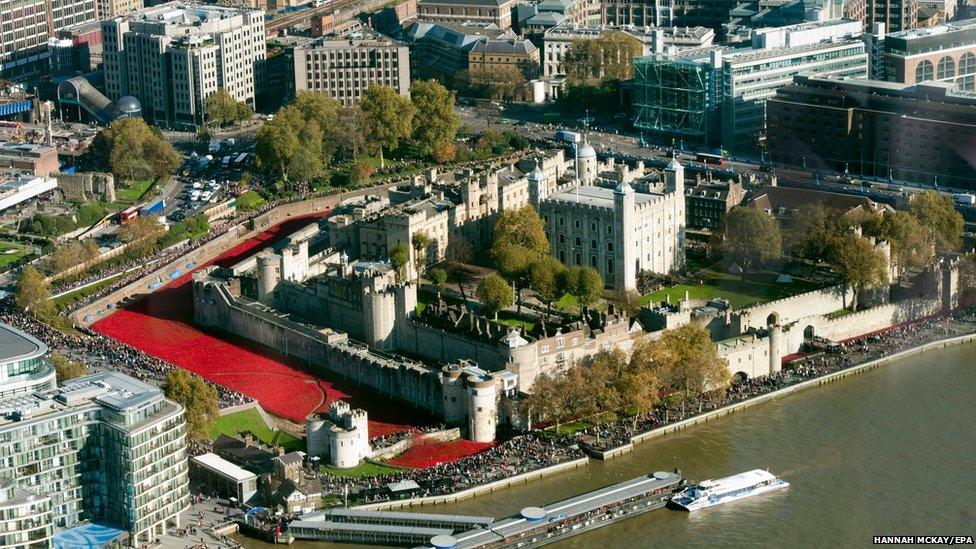
The scale is best appreciated from on high. Here, the red moat of the Tower of London is pictured from the top of The Shard.
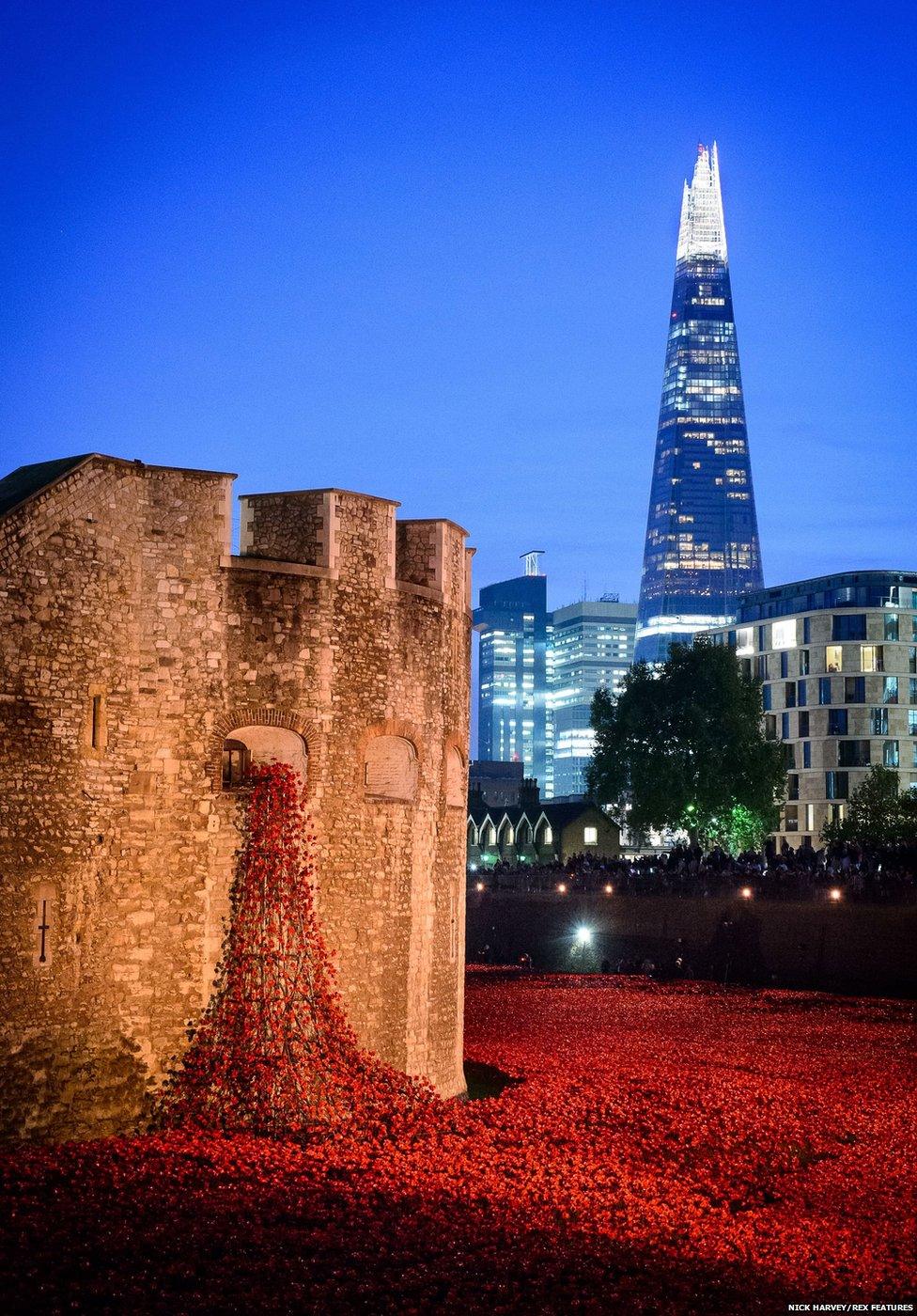
The artwork was put together with the help of the stage designer Tom Piper, who said he had wanted to create a "fluid and organic feel to it, you could see it as blood, water or life force".
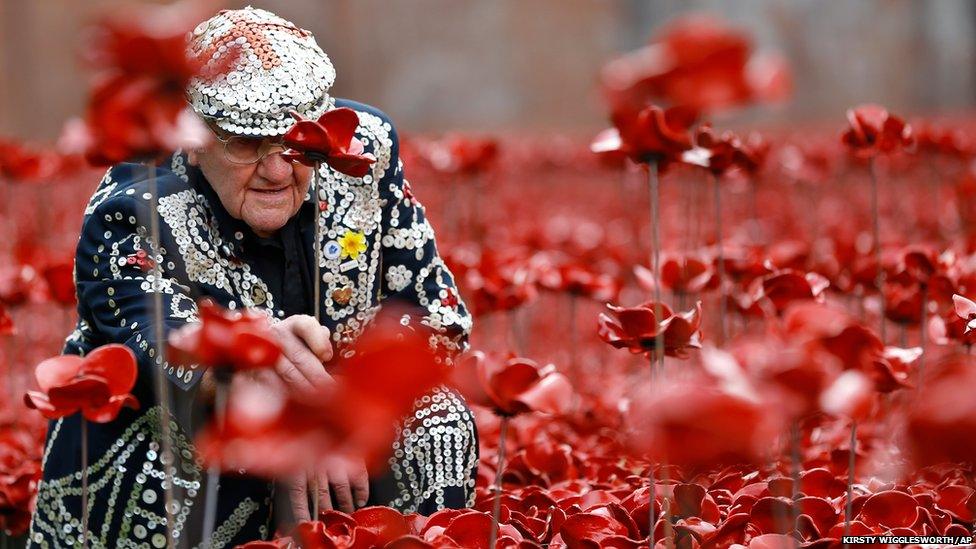
Pearly King of Bow Bells Harry Mayhead, who served in Egypt and France for the Royal Army Service Corps in World War Two, helped to plant the poppies,
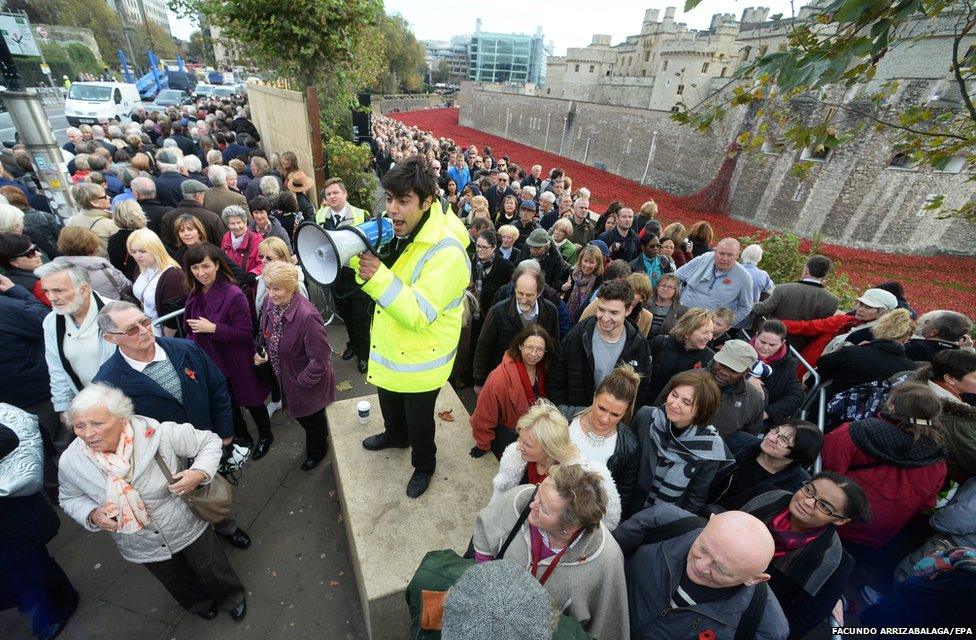

Chelsea Pensioner Albert Willis (left), Yeoman Warder Paul Cunilffe (centre) and Grenadier Guard Joe Robinson, representing three generations of military service, pose for photographers.
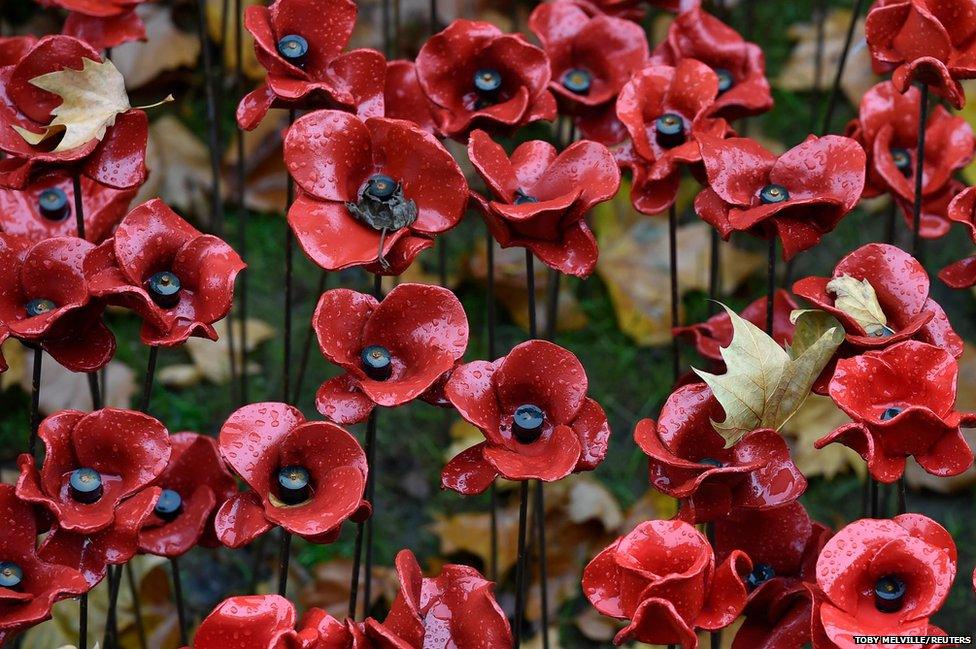
The Royal British Legion has said it hopes the sale of the ceramic poppies will raise in excess of £15m, and charities benefiting from the sale have been told by Chancellor George Osborne that he will waive the VAT from the sale.
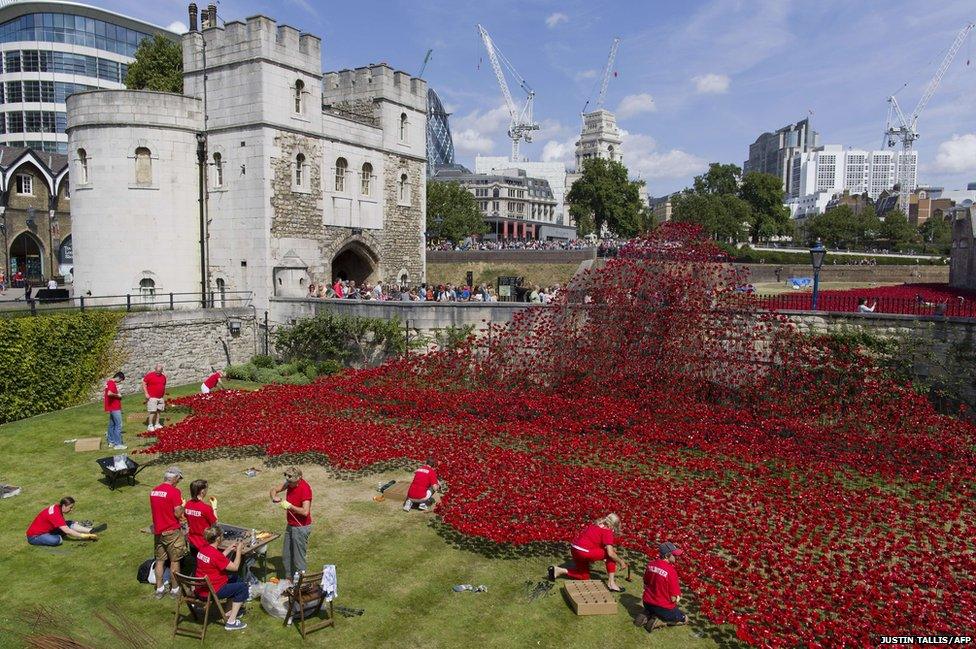
The installation began in early August and has evolved over the weeks, put together by 8,000 volunteers. The poppies range in height from 15cm (6in) to 1m tall. "The installation is transient, I found this poignant and reflective of human life, like those who lost their lives during World War One," said Cummins.
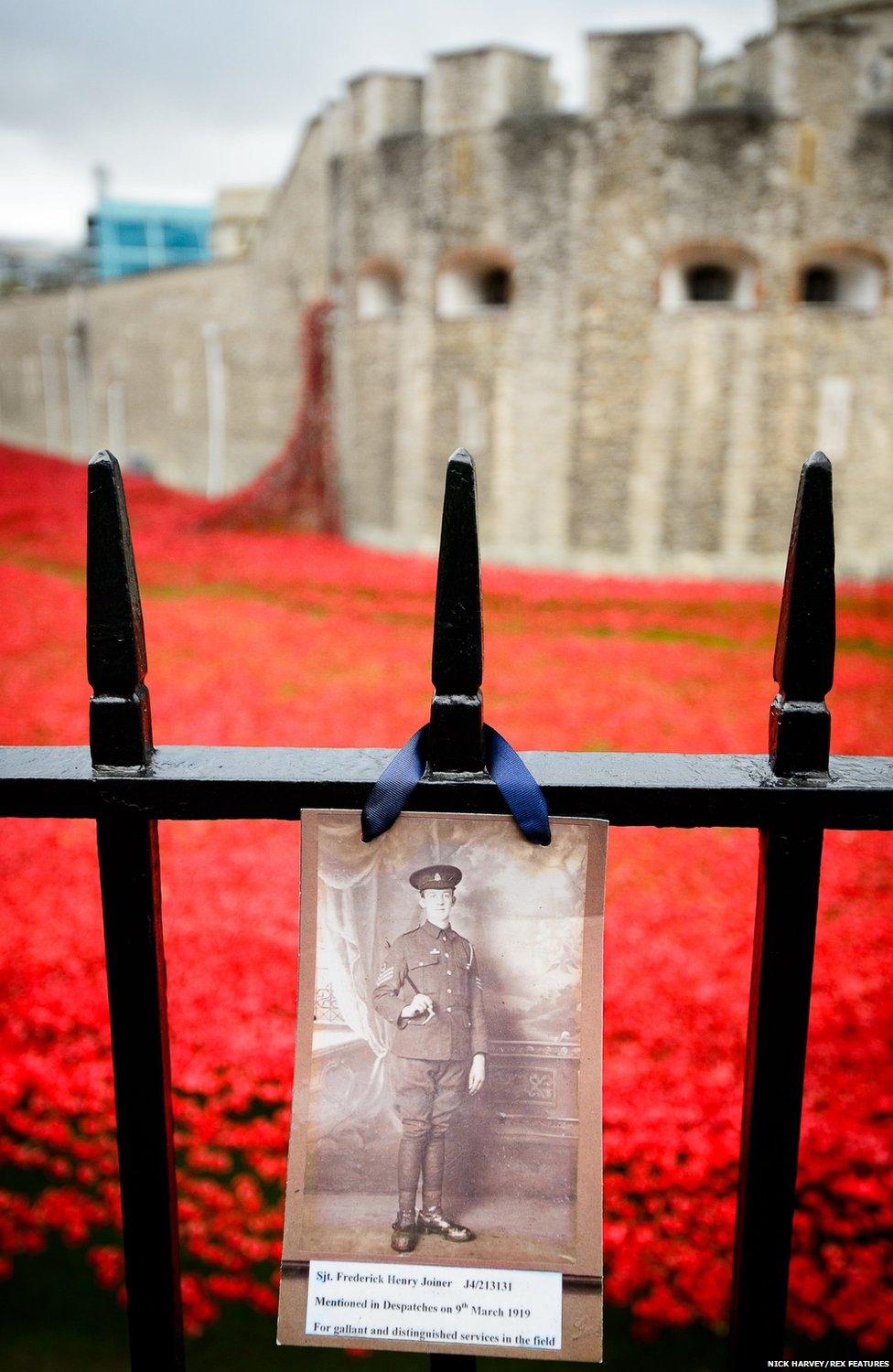
Photographs of servicemen have been placed on the railings that surround the moat. The Tower of London was where more than 1,600 men swore an oath to the Crown after enlisting for the war.

The Queen paid tribute to World War One personnel, in October.
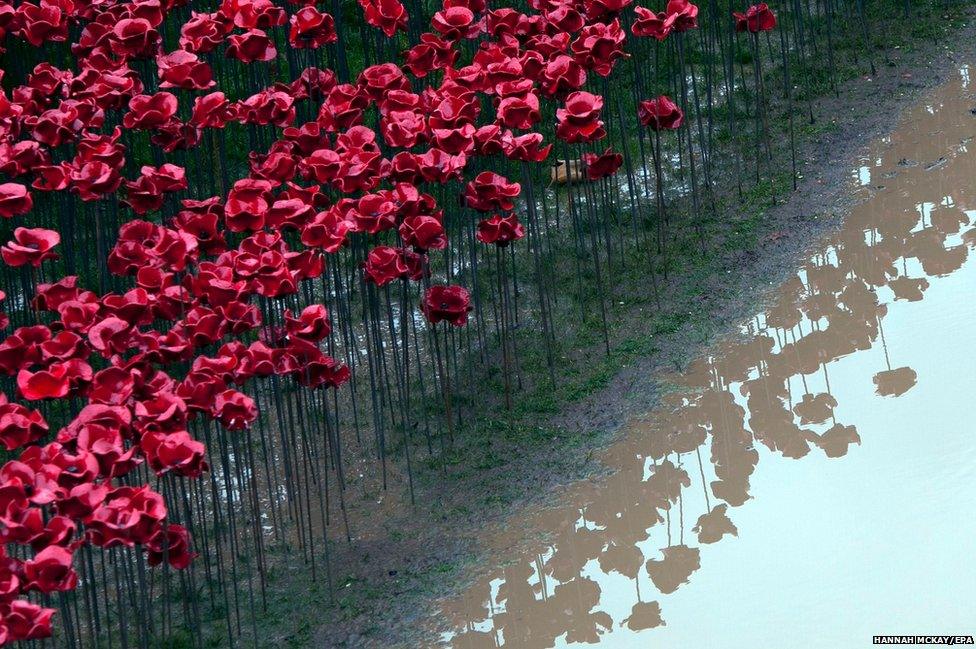
Despite calls to extend the installation beyond 12 November, Historic Royal Palaces said it was always the intention to begin sending the poppies - which have been sold for charity - to their new owners after Armistice Day.
Mr Cummins has also said he never intended the installation to be permanent as it was meant to symbolise that human beings are "transient".
"The idea was it will only be there for a finite time like we are," he said.
"It will be nice to keep it here but it isn't mine anymore - it belongs to the world now."
